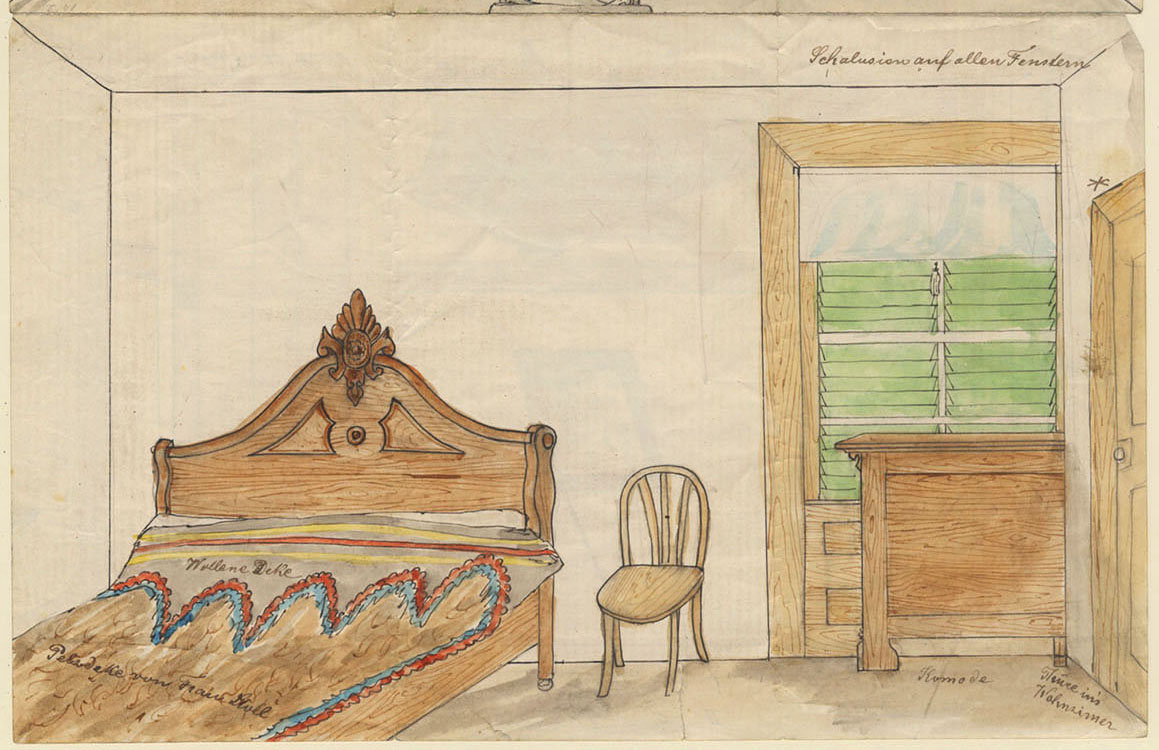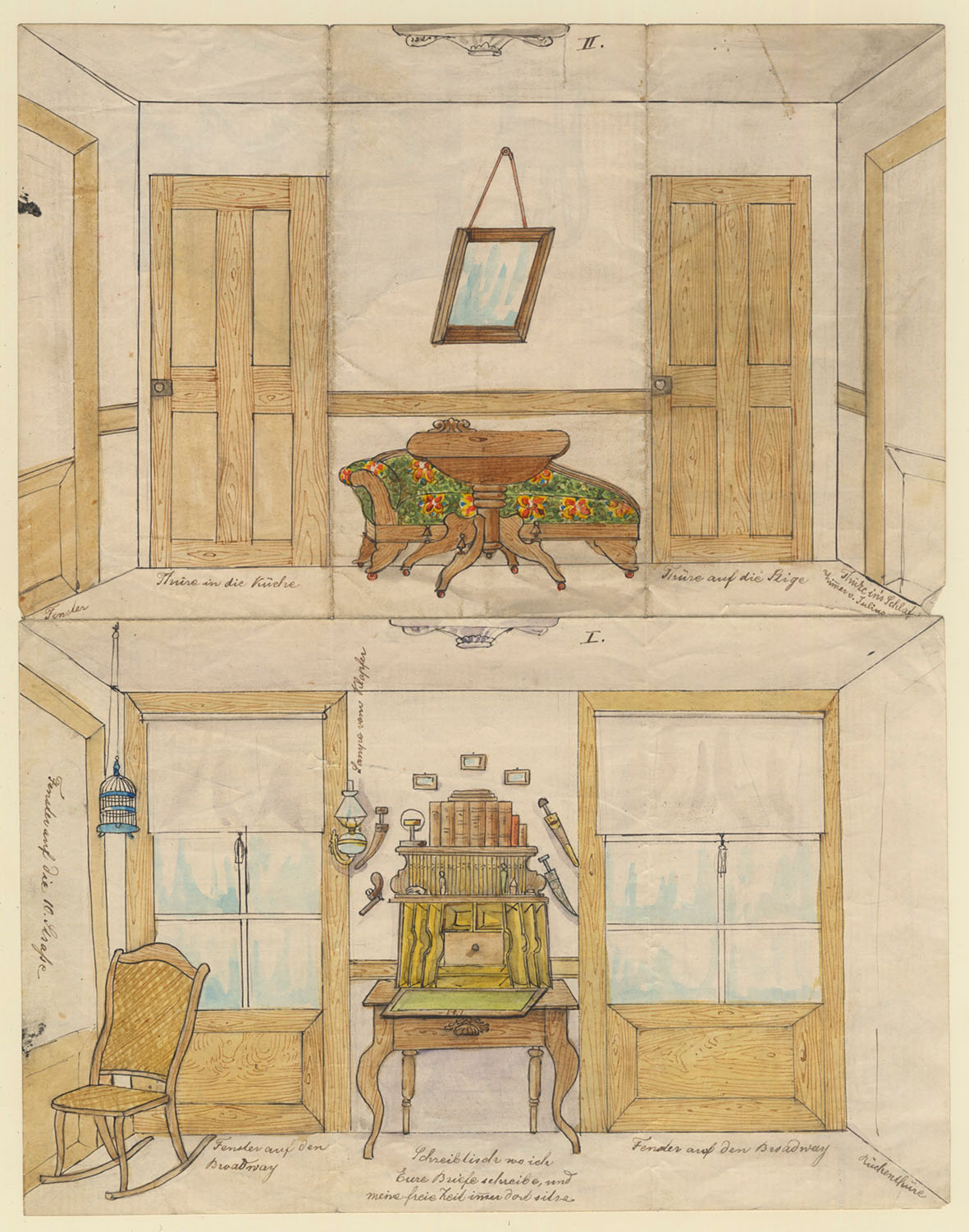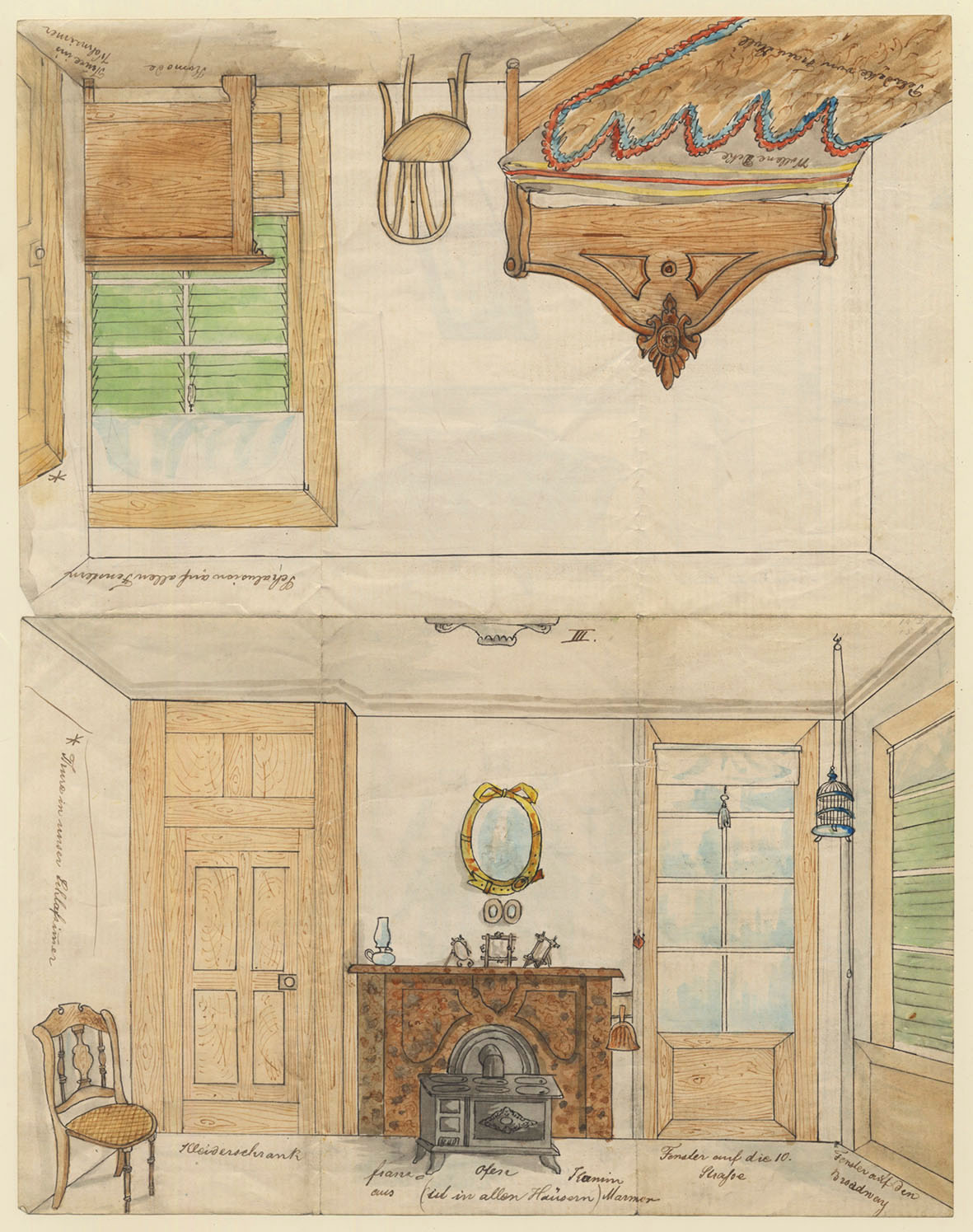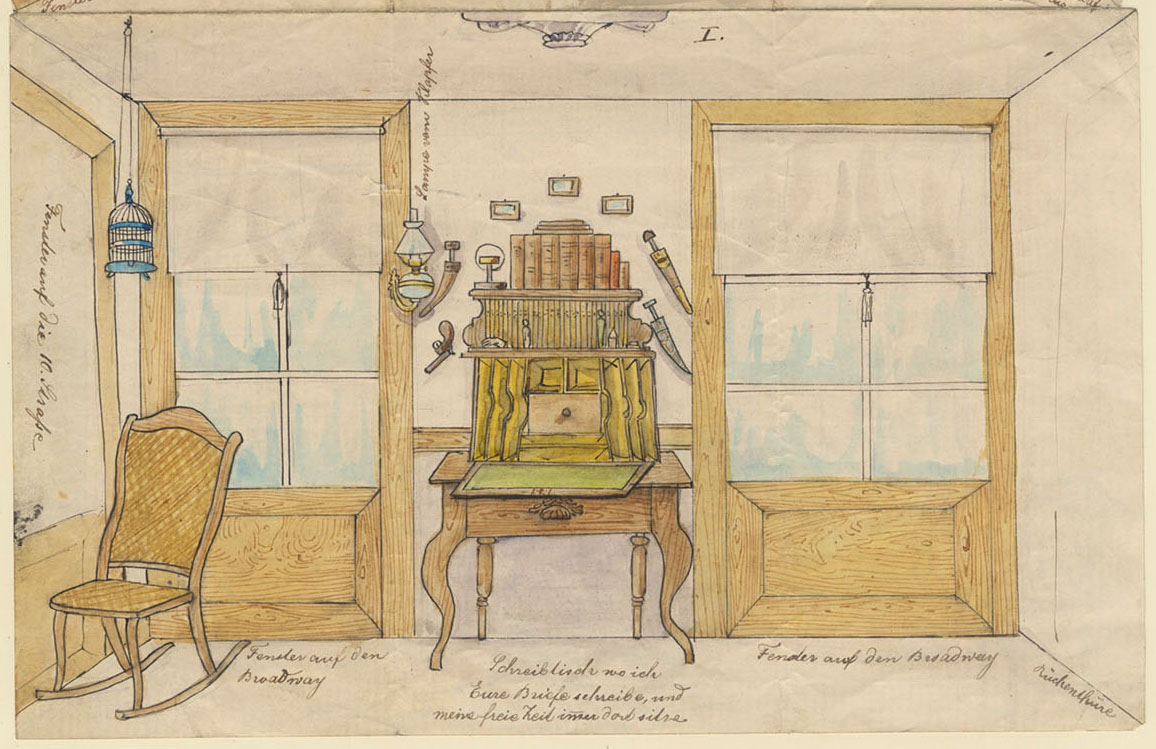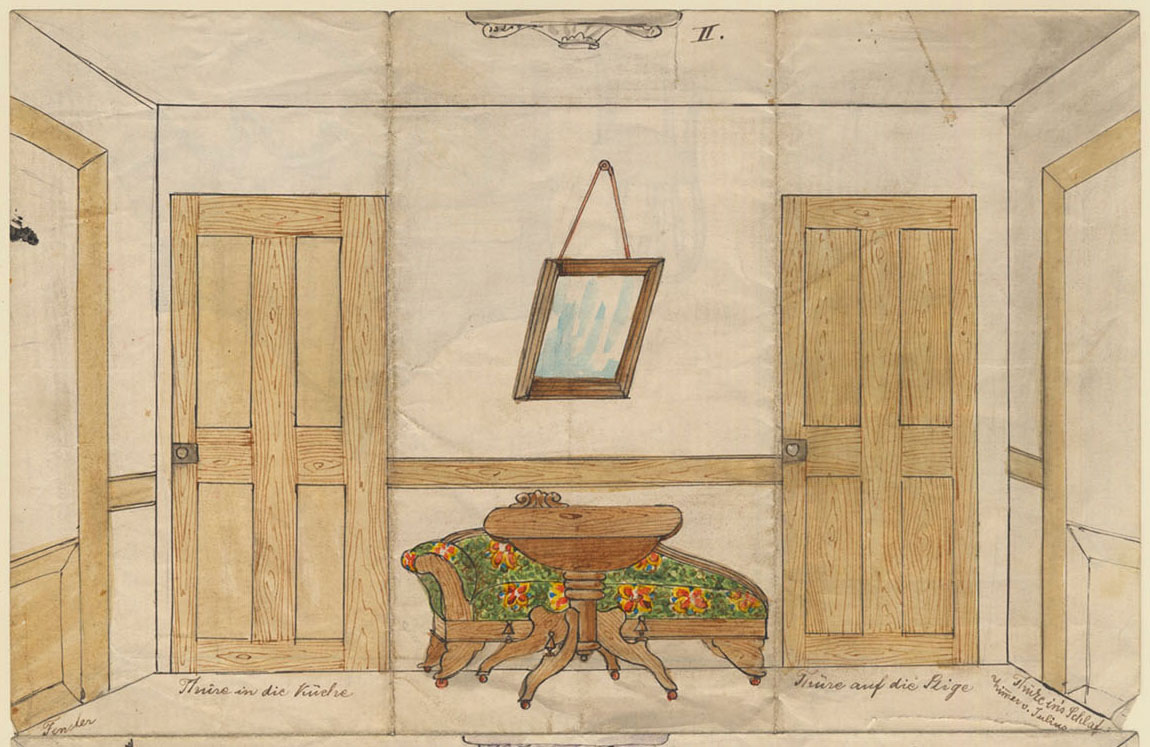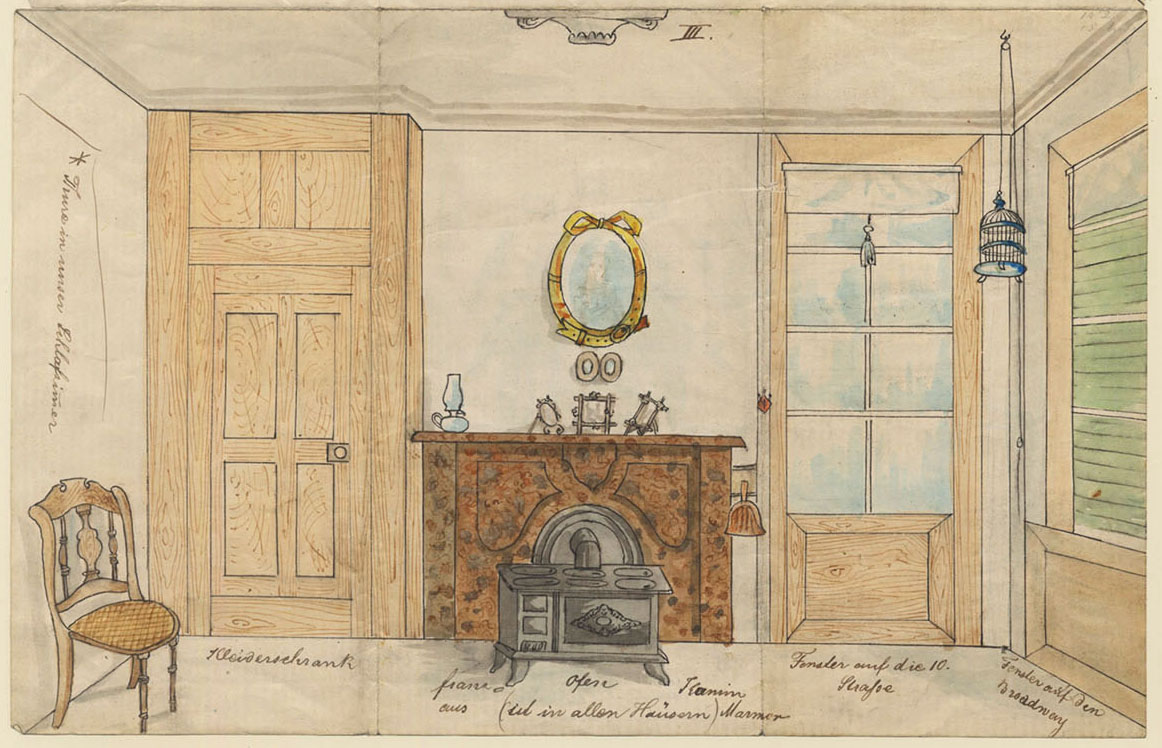GERMAN IMMIGRANT IN NEW YORK, c. 1850
German Immigrant in New York, c. 1850
Four Views in an Apartment on Broadway and 10th Street, New York
Pen and brown ink, coloured washes, on a folded sheet of writing paper, 226 x 291 mm (8.9 x 11.5 inch)
Inscribed: ‘I. Fenster auf die 10. Strasse / Fenster auf den Broadway / Lampe von Klapfer (?) / Schreibtisch wo ich Eure Briefe schreibe, und meine freie Zeit immer dort sitze / Fenster auf den Broadway / Küchenthüre / II. Fenster / Thüre in die Küche / Thüre auf die Stige / Thüre ins Schlaf Zimmer v. Julius / III. * Thüre in unser Schlafzimmer / Kleiderschrank / Ofen franz = Kamin aus Marmor (ist in allen Häusern) / Fenster auf die 10. Strasse / Fenster auf den Broadway / [IV.] Pelzdeke von Frau Stull (?) / Wollene Deke / Schalusion auf allen Fenstern / Komode / Thüre ins Wohnzimmer’
Provenance
Private collection, Germany
***
On this folded sheet of writing paper a German-speaking immigrant in New York has drawn four views of his family’s apartment on the corner of Broadway and 10th Street. Based on stylistic characteristics and on the type of Biedermeier furniture and objects depicted, the sheet is likely to have been executed around the middle of the 19th century, and is an extraordinary record of what ordinary domestic interiors in New York looked like at this period. Rich and grand interiors were much more frequently depicted by their proud owners, and especially in the United States the record of documented interiors in which the working and middle classes lived is scant.
The sheet was presumably made to send to European relatives, to give them an idea of the new surroundings of the emigré family. The anonymous draughtsman has included several explanatory remarks on each view, such as the comment on the marble chimney, “present in all houses” (“ist in allen Häusern”), a luxury which must have astounded his relatives back at home. The drawings are executed in a linear and clear style, which despite the obvious inexperience of their author are of great charm and refinement, which frequently characterises early American art. The comments allow an intimate insight in early American life, such as that at the writing desk, “where I write your letters, and always sit during my leisure” (“wo ich Eure Briefe schreibe, und meine freie Zeit immer dort sitze”).
In the 1820s and 1830s, this area on Broadway, the earliest North-South thoroughfare in New York, was a desirable and fashionable place to live, especially after the opening of Tompkins Square Park in 1834. By the mid-1840s, the block consisted largely of row houses, some of which were designed by Joseph Trench, the architect who helped to bring the Italianate style to the United States. However, by the 1850s the influx of German and Irish immigrants to the area had changed the character of the neighbourhood, and the wealthier residents began to move uptown. The block was then filled out with tenement buildings, and former single family row houses were turned into boarding houses or multiple-family buildings.1
SOLD TO THE METROPOLITAN MUSEUM, NEW YORK
1. For the area, see for instance Lisa Keller, Triumph of Order: Democracy and Public Space in New York and London, New York 2009, p. 171.
